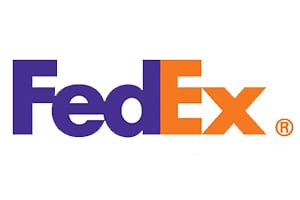 Following suit on rival UPS and its move to offset costs related to peak season volume, FedEx has announced a number of rate changes, some of which will take place in January while others will take effect Nov. 2, ahead of the Thanksgiving-to-Christmas package rush.
Following suit on rival UPS and its move to offset costs related to peak season volume, FedEx has announced a number of rate changes, some of which will take place in January while others will take effect Nov. 2, ahead of the Thanksgiving-to-Christmas package rush.
For both carriers, the exploding growth in ecommerce is a primary driver of the increased volume, year round but especially at peak. eMarketer forecasts global ecommerce will grow 25% in 2015 to $1.67 trillion, representing 7.3% of overall global retail sales of $22.82 trillion. U.S. ecommerce sales are expected to rise 14% to $349 billion this year.
FedEx said its general increase (GRI) will be an average of 4.9% effective January 4 for U.S. domestic, import and export services, as well as for ground and home delivery services. FedEx SmartPost, its last-mile service handled by the U.S. Postal Service, will also increase but a figure was not given. UPS has yet to announce its 2016 rate changes.
In addition, FedEx said the surcharges on packages that exceed its maximum published dimensions of 150 pounds, nine feet in length or 13 feet 9 inches in length and girth combined – which it characterizes as “unauthorized packages” as they exceed allowable dimensions – will increase 91% from $57.50 to $110.
FedEx also updated its fuel surcharges tables today, with the changes to take effect Nov. 2. For Express/International services, the surcharge will go up between 1.5% and 1.75%, and between .5% and 1% for ground. This is on top of a fuel surcharge bump in February that brought Express/International rates up between 1% and 4%, while ground rates rose as much as 3.5%. UPS, whose fuel surcharge rates have been slightly higher than FedEx, followed suit shortly thereafter.
Some observers believe FedEx is seeking to price oversized packages out of its network as they require manual handling – being too large for automated sortation systems – and are generally more expensive to process and ship.
“By raising this charge to $110, there will be far fewer customers putting these types of packages into FedEx Ground,” said Paul Steiner, vice president of strategic analysis for Spend Management Experts. “With a discount, shippers might be able to get this down to $75-$90. But it will have the effect of driving volume out of their network and into freight. Even if it doesn’t, they’ll be collecting more revenue for it.”
The more significant change from FedEx affecting shippers, Steiner said, is the 5% increase in the ground minimum rate to $6.94. The minimum is based on a 1 lb. parcel moving from zone 2.
Tim Sailor, owner of Navigo Consulting Group, said a lot of packages in the unauthorized category are bulky but not heavy, so for many shippers it might not make sense to convert the volume from FedEx to less-than-truckload (LTL) freight. One of his clients, for example, is a leading etailer of sporting goods that sells large items like goalposts, making the FedEx move an expensive proposition.
“I don’t think a lot of shippers will have any alternative but to either take this increase or work with FedEx to try to mitigate the increase in other ways,” Sailor said. He added that while many shippers negotiate rate caps with the major carriers to mitigate GRI increases, no such mechanism exists for many accessorial charges. The biggest change there for FedEx is the additional handling surcharge, which is increasing by 16.7% to $10.50 for Express and Ground both domestically and internationally.
“The changes related to fuel and unauthorized surcharges are in response to changing industry demand dynamics, including increases in average package size and weight and increased residential deliveries,” FedEx said in a statement. Observers believe the fuel surcharge updates are mostly an attempt to recapture losses in fuel surcharge revenues as oil prices remain depressed.
“UPS also did this in February but didn’t announce it,” Steiner said. “They have an asterisk at the bottom of the chart about reserving the right to change the matrix. I expect they’ll take the opportunity to increase their fuel surcharge as well. For now, FedEx has an advantage of being about a point to a point and a half better than UPS in fuel surcharges.”
Rob Martinez, president and CEO of Shipware Inc., said the GRI figure can be misleading, as individual products that fall within FedEx Express will have a greater increase, including standard overnight and two-day delivery. Similarly, he said, rates for FedEx Ground in several weight ranges will exceed 4.9%. Packages of 20 lbs. or less – which make up the majority of ground parcels – will see an average increase of 5.4%.
“That said, the 2016 ground rates take a slightly more even approach to increases at all weights,” Martinez said. “In 2015, they were significantly more pronounced at the lighter weights.”
